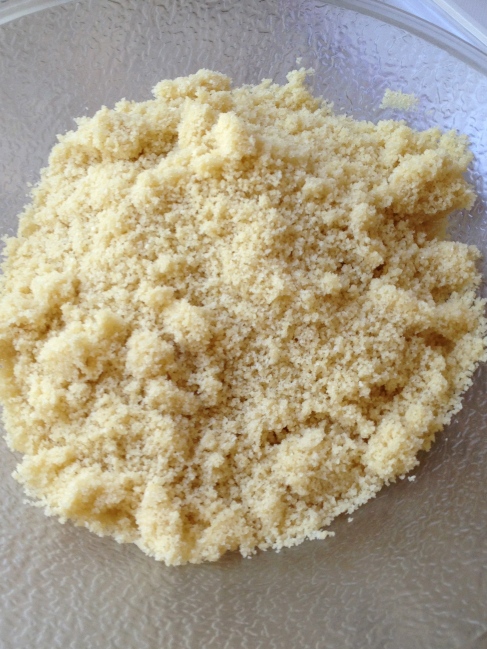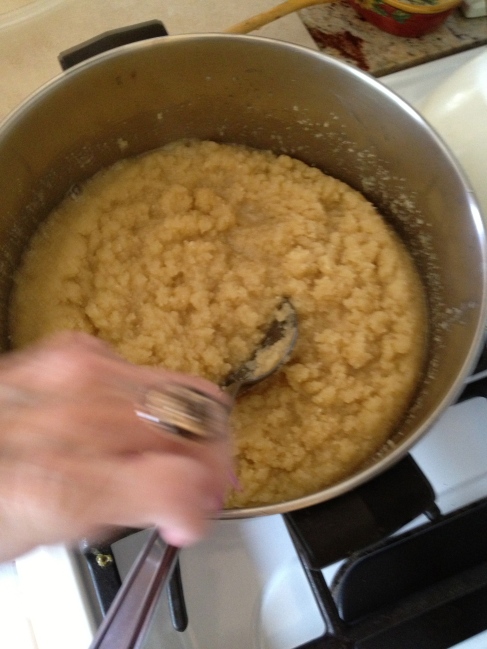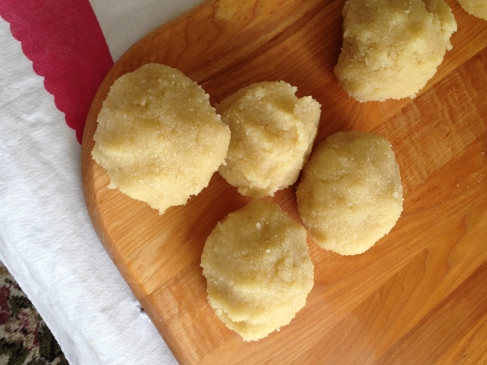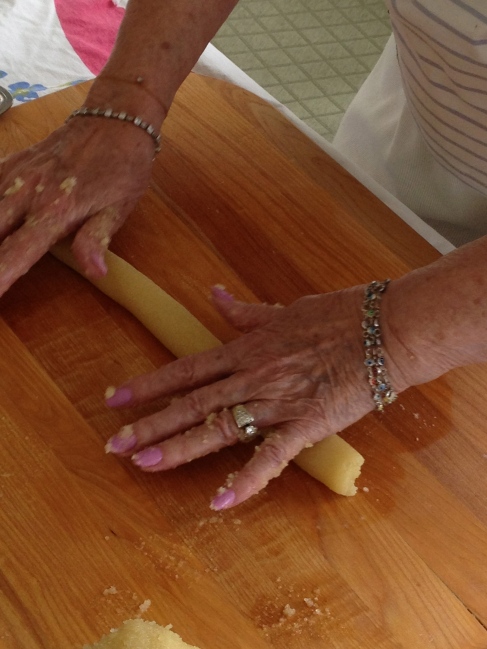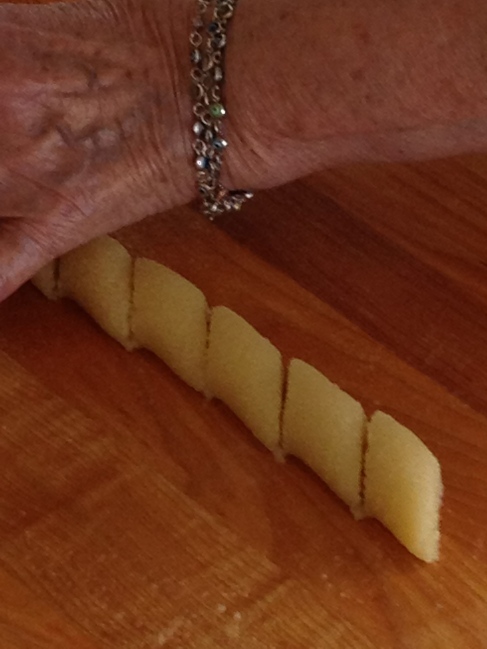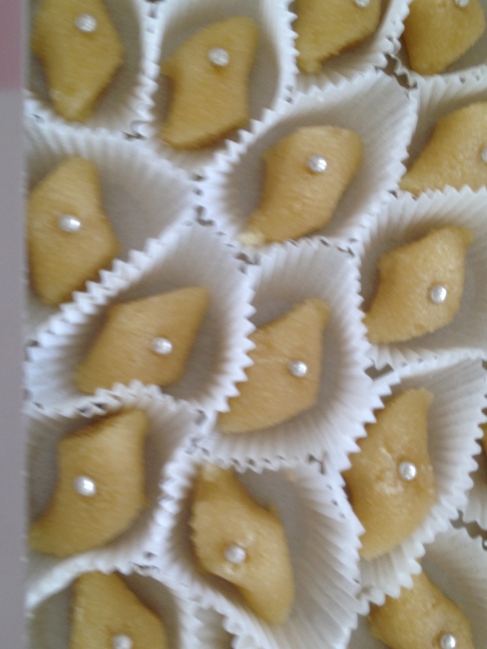Carol Goodman Kaufman, in a recent article for The Forward, writes, “Tu B’Shvat, on the 15th of the month of Shvat (the “T” and “U” equate to the numbers 9 and 6, respectively), was originally designated for the purpose of calculating the age of trees both for harvesting and tithing purposes. The Torah prohibits fruit from being eaten during the first three years of a tree’s growth, but on Tu B’Shvat we eat the first fruits of the fourth year, as well as samples of the seven species mentioned in the Torah (wheat, barley, grapes, figs, pomegranates, olives and dates.)
Even though almonds aren’t included among the seven species, their trees blossom at around the same time in the month of Shvat (roughly February), so the holiday has evolved over time to include the nuts in its menu of delights.”
Read more: http://forward.com/food/330279/almonds-and-marzipan-for-tu-bshvat/#ixzz3y2ghzHtj
The article includes a recipe for marzipan.
I am reprinting here our Rhodesli recipe for Masapan, in honor of Tu B’shvat. Thank you, Carol, for the inspiration!
“Masapan”……marzipan….that delicious sweet that our mothers lovingly make for engagements, weddings, a brit milan or a Bar (and today even a Bat) Mitzvah. Basically a homemade almond confection made with ground almonds and sugar, Marzipan traces it’s origin to …..well….that depends. Some say the Persian empire, introduced to Europe by the Turks; others claim the origin to be Spain. In any case, it got to us, was a delicacy on our beloved Island of Rhodes, and our grandmothers brought it here with them when they came to these shores.
While some in Eastern Europe talk of marzipan being colored and fashioned into miniature fruit-like shapes, our variation is kept in it’s white, pure state, made into a simple design – A very special variety is shaped into a ‘pastelico’ like cup and filled with rosewater or orange blossom scented ‘shroupe’, capped and artfully edged….a treat for the senses!
My mother, Kaye Hasson Israel, uses a recipe shared with her by Rebecca Levy. I watched her make it last week. Here is the recipe and photos. This recipe makes about 125 pieces of masapan.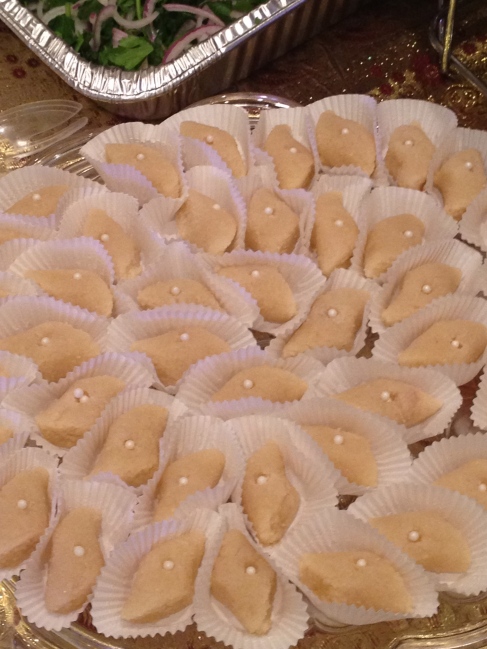
6 C almonds
3 C sugar
4 C water
Start with raw almonds. To blanche, bring a pot of water to a boil. ( enough water to cover the almonds). When water boils, add almonds and leave them in for 4 to 5 minutes (until skin is loose).
Rinse in a colander with cold water. Remove the skins from the almonds and place almonds into a bowl of cold water ( to prevent discoloration).
Take a clean towel and dry almonds thoroughly.
Put almonds into food processor with blade.
Grind to a fine texture.
In the meantime, mix sugar and water and heat over medium/high flame. Make sure sugar dissolves. Bring to a boil. This is to make a sticky syrup. Stir and watch carefully so it does not discolor or burn.

Test for correct stickiness by removing spoon from pot, allow it to cool a bit, placing a drop on your fingers and noting a ‘thread’ of sugar when pressing then pulling apart finger and thumb.
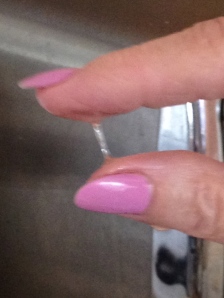
At this point, lower the heat and add ground almonds. Thoroughly blend and constantly stir mixture. Cook and stir masapan until it reaches a dough-like consistency. ( it will cleanly leave the sides and bottom of the pan). Remove from heat and allow to thoroughly cool
Once cooled, knead on your rolling surface to create a smooth dough. Pinch off small portions and roll into a long strip. (Perhaps cut into 10 – 12 portions before rolling).
Keep a bowl of water handy. Dampen your rolling surface and hands, as it will make it easier to roll out. Cut at an angle into diamond shaped pieces.
Our tradition has been to top with a decorative silver ball ( dragees ). These are for decoration and not to be consumed.
For engagements, our tradition has been to make a “mano” (hand) fashioned out of masapan, with silver dragees across the ring finger. This is fashioned on a tray, surrounded by cut pieces of masapan, jordan almonds and often, a gold leafed piece of ‘aruda’ ( the rue plant).

Like all our delicacies, masapan takes a bit of practice. And the results are divine! Enjoy for your special celebrations…and for a special Passover treat!
Bendichas manos!




